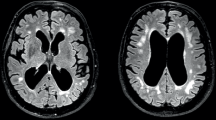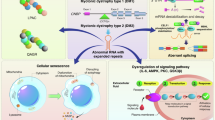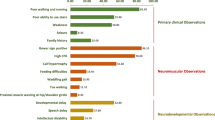Abstract
Myotonic dystrophy (DM) is the most common adult-onset muscular dystrophy with an estimated prevalence of 1/8000. There are two genetically distinct types, DM1 and DM2. DM2 is generally milder with more phenotypic variability than the classic DM1. Our previous data on co-segregation of heterozygous recessive CLCN1 mutations in DM2 patients indicated a higher than expected DM2 prevalence. The aim of this study was to determine the DM2 and DM1 frequency in the general population, and to explore whether the DM2 mutation functions as a modifier in other neuromuscular diseases (NMD) to account for unexplained phenotypic variability. We genotyped 5535 Finnish individuals: 4532 normal blood donors, 606 patients with various non-myotonic NMD, 221 tibial muscular dystrophy patients and their 176 healthy relatives for the DM2 and DM1 mutations. We also genotyped an Italian idiopathic non-myotonic proximal myopathy cohort (n=93) for the DM2 mutation. In 5496 samples analyzed for DM2, we found three DM2 mutations and two premutations. In 5511 samples analyzed for DM1, we found two DM1 mutations and two premutations. In the Italian cohort, we identified one patient with a DM2 mutation. We conclude that the DM2 mutation frequency is significantly higher in the general population (1/1830; P-value=0.0326) than previously estimated. The identification of DM2 mutations in NMD patients with clinical phenotypes not previously associated with DM2 is of particular interest and is in accord with the high overall prevalence. On the basis of our results, DM2 appears more frequent than DM1, with most DM2 patients currently undiagnosed with symptoms frequently occurring in the elderly population.
Similar content being viewed by others
Log in or create a free account to read this content
Gain free access to this article, as well as selected content from this journal and more on nature.com
or
References
Brook JD, McCurrach ME, Harley HG et al: Molecular basis of myotonic dystrophy: expansion of a trinucleotide (CTG) repeat at the 3′ end of a transcript encoding a protein kinase family member. Cell 1992; 69: 385.
Fu YH, Pizzuti A, Fenwick Jr RG et al: An unstable triplet repeat in a gene related to myotonic muscular dystrophy. Science 1992; 255: 1256–1258.
Mahadevan M, Tsilfidis C, Sabourin L et al: Myotonic dystrophy mutation: an unstable CTG repeat in the 3′ untranslated region of the gene. Science 1992; 255: 1253–1255.
Bachinski LL, Udd B, Meola G et al: Confirmation of the type 2 myotonic dystrophy (CCTG)n expansion mutation in patients with proximal myotonic myopathy/proximal myotonic dystrophy of different European origins: a single shared haplotype indicates an ancestral founder effect. Am J Hum Genet 2003; 73: 835–848.
Liquori CL, Ricker K, Moseley ML et al: Myotonic dystrophy type 2 caused by a CCTG expansion in intron 1 of ZNF9. Science 2001; 293: 864–867.
Machuca-Tzili L, Brook D, Hilton-Jones D : Clinical and molecular aspects of the myotonic dystrophies: a review. Muscle Nerve. 2005; 32: 1–18.
Krahe R, Bachinski LL, Udd B : Myotonic dystrophy type 2: clinical and genetic aspects; in Ashizawa T, Wells D (eds): Genetic Instabilities and Neurological Diseases. USA: Academic Press, 2006, 2nd edn, pp 131–150.
Liquori CL, Ikeda Y, Weatherspoon M et al: Myotonic dystrophy type 2: human founder haplotype and evolutionary conservation of the repeat tract. Am J Hum Genet 2003; 73: 849–862.
Bachinski LL, Czernuszewicz T, Ramagli LS et al: Premutation allele pool in myotonic dystrophy type 2. Neurology 2009; 72: 490–497.
Harper PS : Myotonic Dystrophy, 3rd edn. London, UK: W.B. Saunders, 2001.
Siciliano G, Manca M, Gennarelli M et al: Epidemiology of myotonic dystrophy in Italy: re-apprisal after genetic diagnosis. Clin Genet 2001; 59: 344–349.
Magee A, Nevin NC : The epidemiology of myotonic dystrophy in Northern Ireland. Community Genet 1999; 2: 179–183.
Mladenovic J, Pekmezovic T, Todorovic S et al: Epidemiology of myotonic dystrophy type 1 (Steinert disease) in Belgrade (Serbia). Clin Neurol Neurosurg 2006; 108: 757–760.
Segel R, Silverstein S, Lerer I et al: Prevalence of myotonic dystrophy in Israeli Jewish communities: inter-community variation and founder premutations. Am J Med Genet A 2003; 119: 273–278.
Medica I, Markovic D, Peterlin B : Genetic epidemiology of myotonic dystrophy in Istria, Croatia. Acta Neurol Scand 1997; 95: 164–166.
Bouchard G, Roy R, Declos M, Mathieu J, Kouladjian K : Origin and diffusion of the myotonic dystrophy gene in the Saguenay region (Quebec). Can J Neurol Sci 1989; 16: 119–122.
Hsiao KM, Chen SS, Li SY et al: Epidemiological and genetic studies of myotonic dystrophy type 1 in Taiwan. Neuroepidemiology 2003; 22: 283–289.
Ashizawa T, Epstein HF : Ethnic distribution of myotonic dystrophy gene. Lancet 1991; 338: 642–643.
Udd B, Meola G, Krahe R et al: 140th ENMC International Workshop: myotonic dystrophy DM2/PROMM and other myotonic dystrophies with guidelines on management. Neuromuscul Disord 2006; 16: 403–413.
Day JW, Ricker K, Jacobsen JF et al: Myotonic dystrophy type 2: molecular, diagnostic and clinical spectrum. Neurology 2003; 60: 657–664.
Sallinen R, Vihola A, Bachinski LL et al: New methods for molecular diagnosis and demonstration of the (CCTG)n mutation in myotonic dystrophy type 2 (DM2). Neuromuscul Disord 2004; 14: 274–283.
Sermon K, Seneca S, De Rycke M et al: PGD in the lab for triplet repeat diseases – myotonic dystrophy, Huntington's disease and Fragile-X syndrome. Mol Cell Endocrinol 2001; 183 (Suppl 1): S77–S85.
Warner JP, Barron LH, Goudie D et al: A general method for the detection of large CAG repeat expansions by fluorescent PCR. J Med Genet 1996; 33: 1022–1026.
Coolbaugh-Murphy MI, Xu J, Ramagli LS, Brown BW, Siciliano MJ : Microsatellite instability (MSI) increases with age in normal somatic cells. Mech Ageing Dev 2005; 126: 1051–1059.
Pavlakis SG, Phillips PC, DiMauro S, De Vivo DC, Rowland LP : Mitochondrial myopathy, encephalopathy, lactic acidosis, and strokelike episodes: a distinctive clinical syndrome. Ann Neurol 1984; 16: 481–488.
Montagna P, Gallassi R, Medori R et al: MELAS syndrome: characteristic migrainous and epileptic features and maternal transmission. Neurology 1988; 38: 751–754.
Auvinen S, Suominen T, Hannonen P, Bachinski LL, Krahe R, Udd B : Myotonic dystrophy type 2 found in two of sixty-three persons diagnosed as having fibromyalgia. Arthritis Rheum 2008; 58: 3627–3631.
Suominen T, Schoser B, Raheem O et al: High frequency of co-segregating CLCN1 mutations among myotonic dystrophy type 2 patients from Finland and Germany. J Neurol 2008; 255: 1731–1736.
Arsenault ME, Prevost C, Lescault A, Laberge C, Puymirat J, Mathieu J : Clinical characteristics of myotonic dystrophy type 1 patients with small CTG expansions. Neurology 2006; 66: 1248–1250.
Schoser BG, Ricker K, Schneider-Gold C et al: Sudden cardiac death in myotonic dystrophy type 2. Neurology 2004; 63: 2402–2404.
Udd B, Vihola A, Sarparanta J, Richard I, Hackman P : Titinopathies and extension of the M-line mutation phenotype beyond distal myopathy and LGMD2J. Neurology 2005; 64: 636–642.
Acknowledgements
We acknowledge Tamer Ahmed for his technical assistance with DM2 and DM1 mutation analysis. We also acknowledge Merja Soininen and Satu Luhtasela for their assistance with sample preparations and logistics. TS was funded by the Finnish Cultural Foundation, Pirkanmaa Regional fund and the Pirkanmaa Hospital District research fund. CA was supported by the Telethon Genetic Biobank project GTB07001, the Eurobiobank project no. QLRI-CT-2002-02769 and the Cariparo grant. RK was supported by grants from the NIH (AR48171), the Muscular Dystrophy Association, USA and by the Kleberg Foundation. BU was supported by grants from the Vaasa Central Hospital district and Pirkanmaa Hospital district medical research funds and the Liv och Hälsa medical research foundation.
Author information
Authors and Affiliations
Corresponding author
Ethics declarations
Competing interests
The authors declare no conflict of interest.
Rights and permissions
About this article
Cite this article
Suominen, T., Bachinski, L., Auvinen, S. et al. Population frequency of myotonic dystrophy: higher than expected frequency of myotonic dystrophy type 2 (DM2) mutation in Finland. Eur J Hum Genet 19, 776–782 (2011). https://doi.org/10.1038/ejhg.2011.23
Received:
Revised:
Accepted:
Published:
Issue date:
DOI: https://doi.org/10.1038/ejhg.2011.23
Keywords
This article is cited by
-
A retrospective study of accuracy and usefulness of electrophysiological exercise tests
Journal of Neurology (2024)
-
Multi-level profiling unravels mitochondrial dysfunction in myotonic dystrophy type 2
Acta Neuropathologica (2024)
-
A diagnostic support system based on pain drawings: binary and k-disease classification of EDS, GBS, FSHD, PROMM, and a control group with Pain2D
Orphanet Journal of Rare Diseases (2023)
-
Update on Therapy for Myotonic Dystrophy Type 1
Current Treatment Options in Neurology (2023)
-
Clinical score for early diagnosis of myotonic dystrophy type 2
Neurological Sciences (2023)



